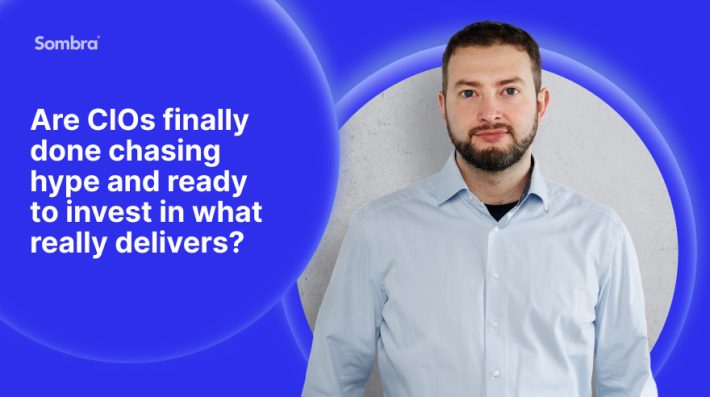Traditionally, the Gartner IT Symposium/Xpo serves as a compass for IT leaders, pointing toward the most impactful technological and business trends. Well, after dozens of speeches, keynote presentations and my own field recon, I can say the 2024 event in Orlando was no exception.
The main theme running through the stages and sidelines? Let’s finally get ideas to work. And believe me, this statement was repeated multiple times, especially when it comes to AI. How do we create solutions with acceptable ROI? How do we get measurable results? Where does the visionary end and the business begin? I’ve tried to gather answers to all these essential questions and pack them into the traditional “key trends” format.
From empowering non-technical teams with low-code platforms to strengthening IT infrastructures against current and future threats, it’s all about equipping CIOs to lead their organizations into 2025 and beyond with confidence and clarity. So, let’s dive in.
1. Automation: A Continuous Evolution Toward Hyperautomation
Automation remains a cornerstone of enterprise innovation, continuing to expand and evolve as it has over the past decade. For CIOs, CTOs, and other Officers it continues to serve as a foundation for streamlining processes, reducing costs, accelerating decision-making, and other results that we love to buy and sell. Solutions based on automated processes, such as AI-powered customer service chatbots or RPA systems, are becoming increasingly common, enabling organizations to balance innovation with operational excellence.
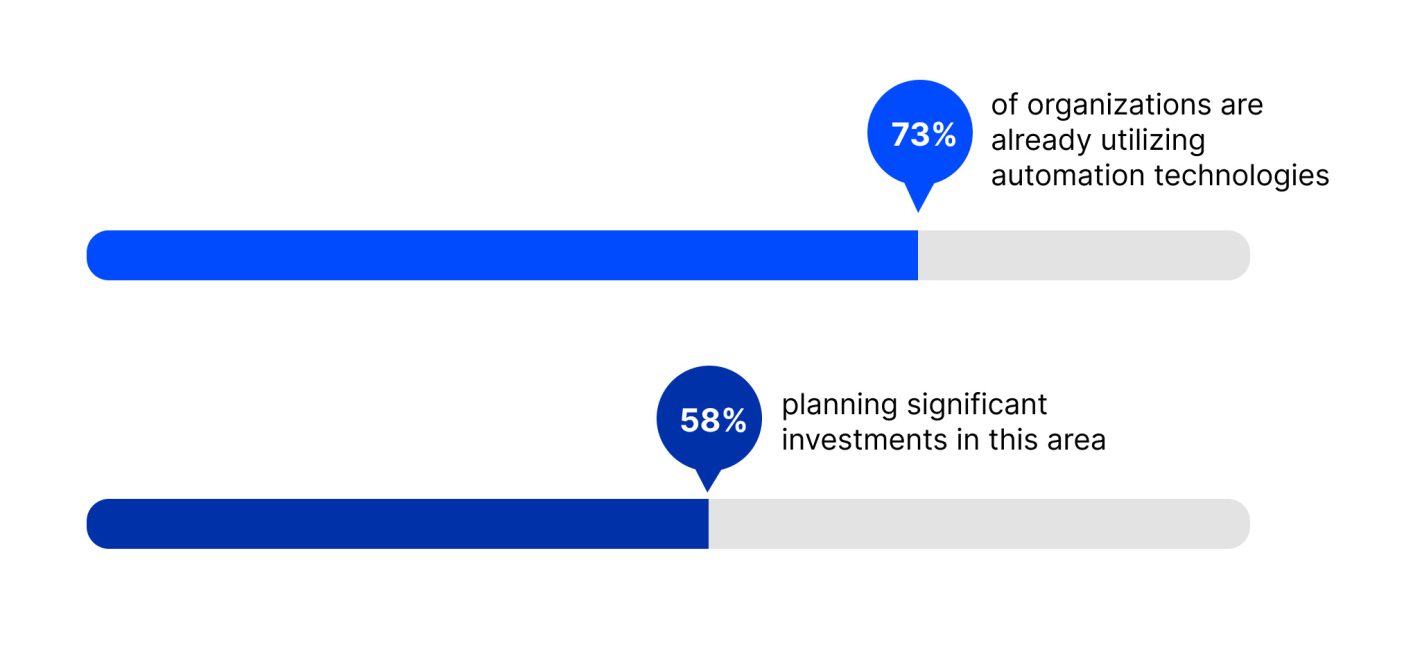
Source: Deloitte
A recent Deloitte survey reveals that 73% of organizations are already utilizing automation technologies, with 58% planning significant investments in this area. But there’s more. For businesses that have successfully implemented automation and achieved strong ROI, the market now offers the next step: hyperautomation.
Hyperautomation involves the orchestrated use of multiple technologies, tools, and platforms—including AI, machine learning, and RPA—to rapidly identify and automate as many business processes as possible. This approach takes automation to a new level, creating a comprehensive ecosystem that drives efficiency and agility across all areas of an organization.
By building on their existing automation strategies, organizations can unlock even greater potential, moving from isolated process improvements to enterprise-wide transformation.
2. AI and Generative AI: From Potential to Performance
Artificial Intelligence and Generative AI remain the hot topic in the industry. And that’s no wonder: the global artificial intelligence market size was valued almost USD 640 billion in 2024 and is projected to hit around USD 3,700 billion by 2034. But at the Gartner event, the buzz wasn’t about the numbers — it was about pragmatism.
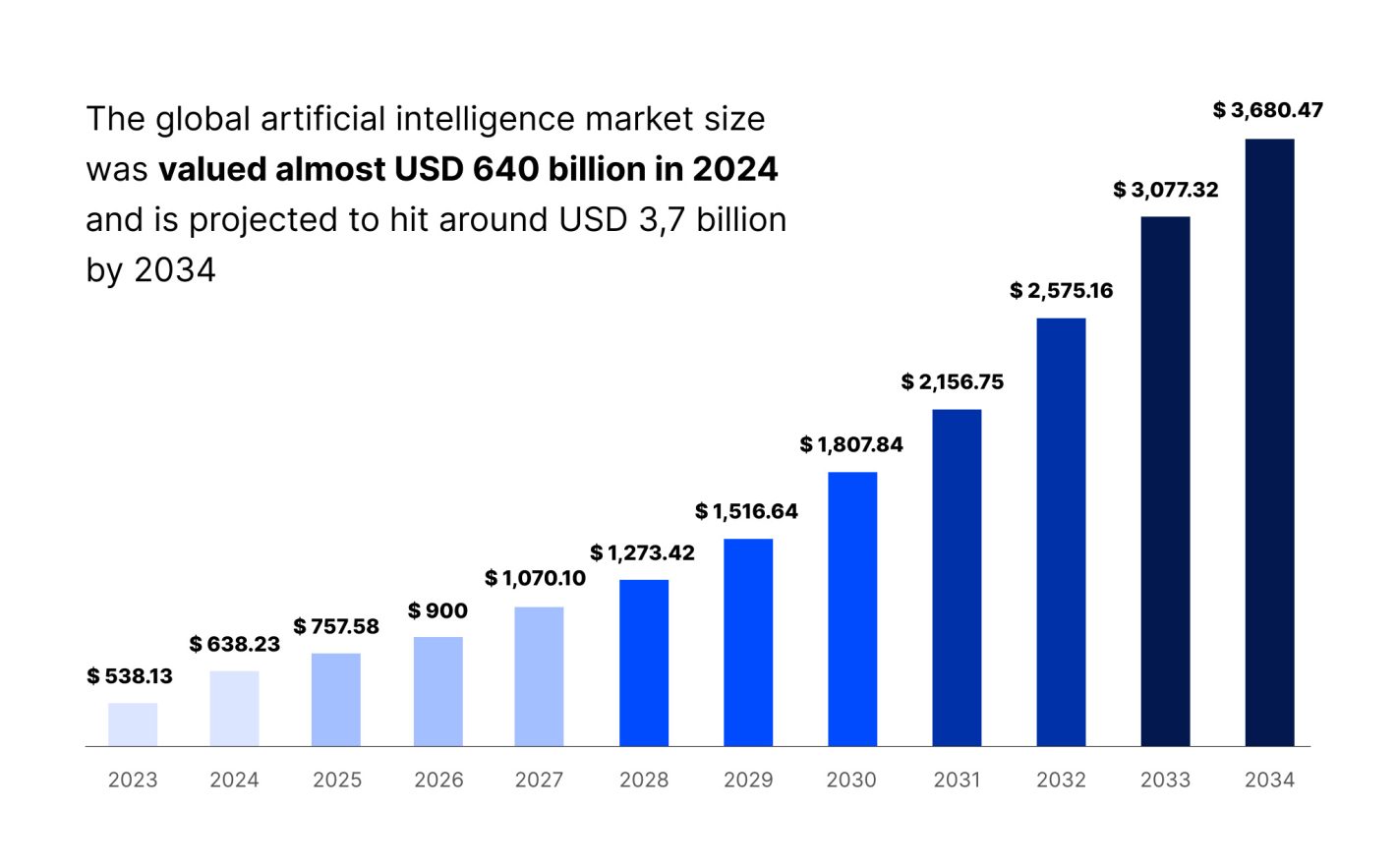


Artificial intelligence market size prediction
The key takeaway can be described as a statement from one of the speakers: “It’s time to cut through the hype”. This aligns with Accenture’s findings stating that 76% of executives struggle with how to scale AI across the business and only 15% of organizations have successfully deployed AI initiatives. Operationalizing AI remains a significant hurdle.
My point here: you should identify the problem first, and only then apply the latest shiny technology. In other words, align your tech with your business goals. Whether it’s predictive maintenance in manufacturing or fraud detection in finance, CIOs must focus on initiatives that deliver tangible outcomes.
Another standout insight: Generative AI isn’t here to replace developers — it’s here to supercharge them. Tools like OpenAI’s Codex and GitHub Copilot are slashing development time by up to 50%, assisting with tasks like code generation and debugging. This frees up developers to tackle complex challenges and drive innovation, creating a powerful partnership between human creativity and machine efficiency.
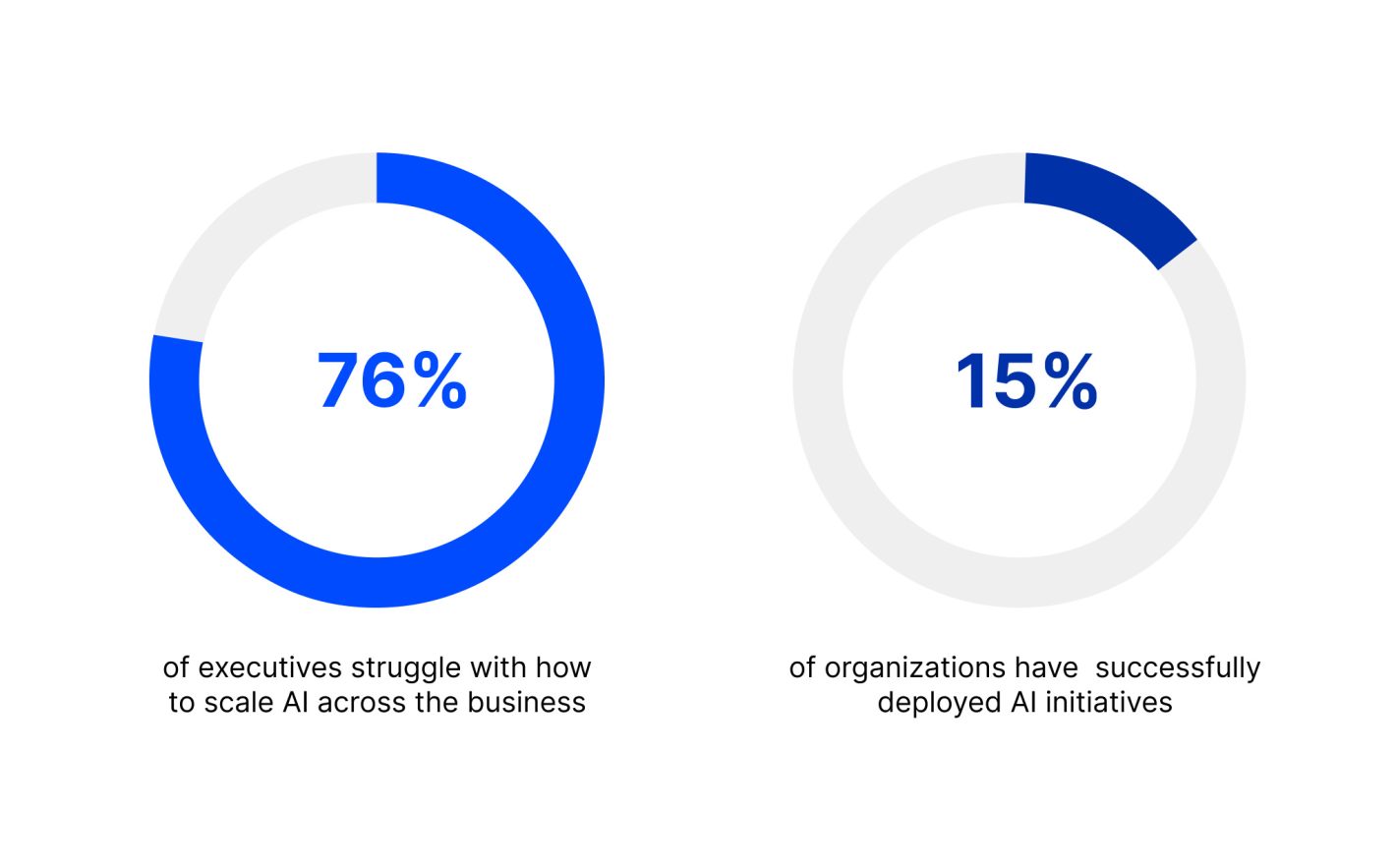


Source: Accenture
Bottom line? AI’s potential lies not in being a one-size-fits-all solution but in its ability to address specific challenges through tailored approaches. Classic AI/ML and Generative AI each serve distinct purposes, targeting different types of problems. By shifting the mindset from “investing in AI” to “identifying the right problems AI can solve,” organizations can strategically transform AI from a buzz into a business driver.
3. Low-Code/No-Code Platforms: Democratizing Innovation
Even though the supply of professional developers currently exceeds market demand, Gartner forecasts that the adoption of low-code and no-code platforms will continue to rise. The driving force behind this trend is the democratization of application development, enabling organizations to meet the growing need for agility and innovation.
This paradigm shift empowers employees across all departments to become “citizen developers,” creating applications without extensive coding knowledge. This not only reduces the burden on IT teams but also accelerates time-to-market for digital initiatives. Global spending on low-code and no-code technologies is expected to reach $30 billion by 2025, growing at an annual rate exceeding 20%.
The appeal is in the accessibility: marketing teams can craft custom analytics dashboards, HR departments can automate onboarding processes, and customer service teams can build interactive chatbots — all without writing a single line of code.
Financial institutions are at the forefront of this movement. For example, Citibank implemented a low-code platform to streamline compliance workflows, reducing development time by 70% and operational costs by 30%. In healthcare, organizations like the Cleveland Clinic have developed patient scheduling apps in weeks rather than months, significantly improving patient satisfaction scores.
Of course, scaling adoption comes with its own challenges — shadow IT and security risks being top concerns. At the symposium, CIOs emphasized the need for governance frameworks to manage these risks while maximizing the platforms’ potential.



Source: Forbes
The takeaway: Low-code/no-code platforms are democratizing software development, making it faster, cheaper, and accessible to more people than ever before. With the right guardrails in place, these tools are set to revolutionize how organizations innovate.
4. Hybrid Computing: Innovation Without Compromise
For organizations grappling with modernizing IT infrastructure, hybrid computing is emerging as the go-to solution. Unlike the historical trend of wholesale migrations to new technologies—mainframes to desktops, desktops to client-server models, on-premises to the cloud—hybrid computing embraces an organic integration of diverse computing approaches.
The problem with past transitions was the tendency to either go all-in on the latest technology or ignore change until it became critical. Over time, organizations have realized that newer isn’t always better, and a balanced approach can deliver superior outcomes. For example, mainframes built in the 1970s (still forming the backbone of the U.S. financial system) remain relevant despite the push toward newer paradigms like cloud and microservices. Hybrid computing recognizes this reality, offering a way to blend legacy systems with modern advancements.
By combining on-premises data centers, private clouds, and public cloud services, hybrid computing delivers the best of both worlds: innovation without sacrificing the reliability of existing systems. At Gartner’s event, hybrid computing was frequently highlighted as a cornerstone strategy for scalability, resilience, and compliance. For instance, Gartner predicts that by 2025, 90% of enterprises will adopt hybrid cloud strategies, and CBTS states that 87% of all enterprises already embrace a hybrid cloud strategy.
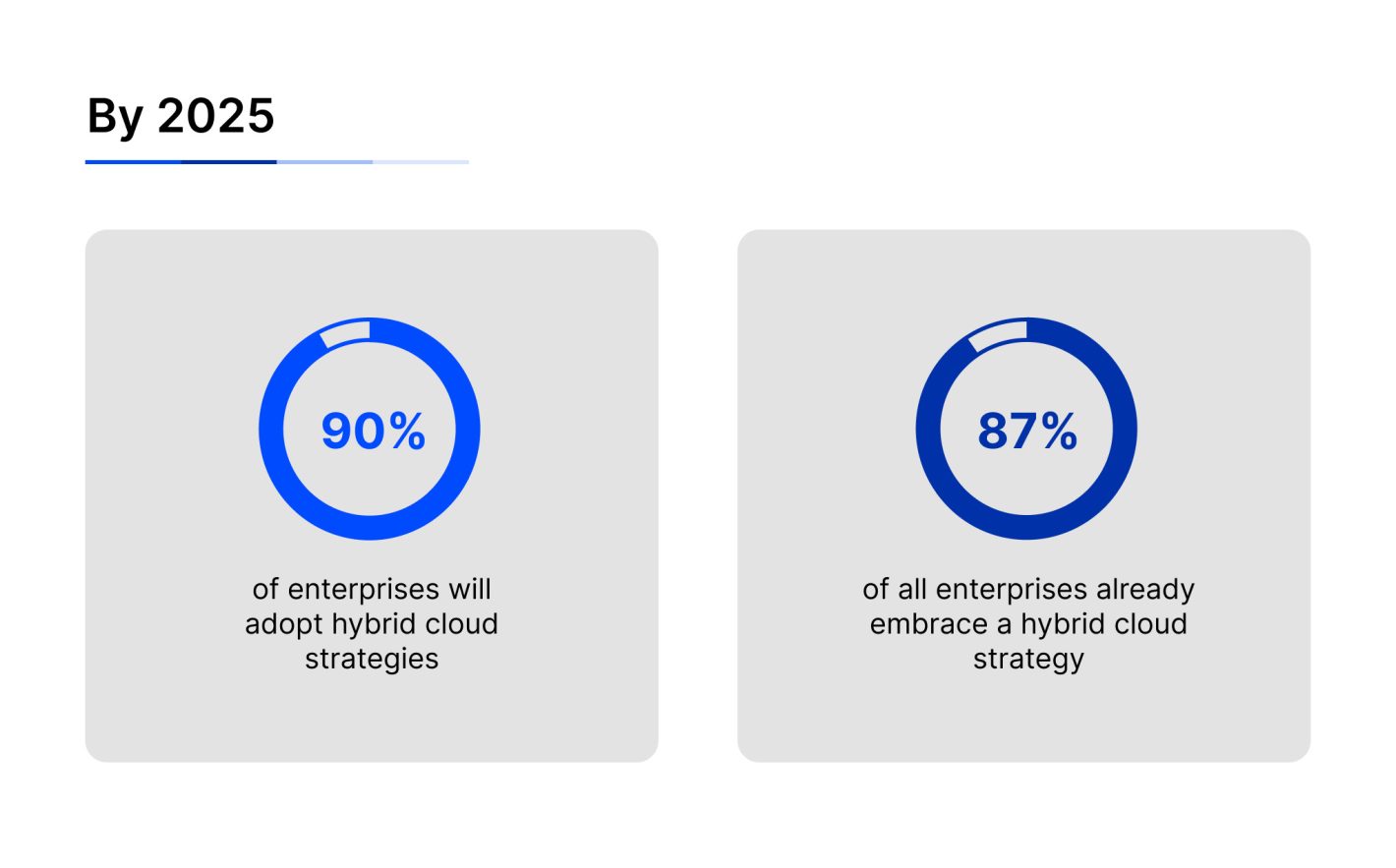


Source: Gartner
Take banking, for instance. Hybrid models enable real-time transaction processing in the cloud while keeping sensitive customer data securely on-premises. In healthcare, hybrid strategies are transforming diagnostics, with cloud-based analytics generating insights while patient data remains safely stored locally.
The benefits include enhanced performance, productivity, and resiliency across data-intensive and mission-critical workloads, along with improved compliance with data residency and security requirements. Hybrid computing proves that modernization doesn’t mean compromise—it’s about integration and adaptability.
5. Advanced Authentication: Building a Quantum-Proof Defense
While Quantum computing direct usage remains distant for most organizations due to high costs, the threat it poses to current encryption standards is already a pressing concern. As quantum capabilities progress, they threaten to make traditional encryption obsolete, putting sensitive data at risk sooner than expected.
Gartner speakers emphasized the urgency for organizations to act now by investing in advanced authentication measures and exploring quantum-resistant encryption strategies. For instance, the National Institute of Standards and Technology is already working on post-quantum cryptography standards, but adoption remains slow – only 5% of organizations were exploring quantum-resistant protocols in 2023-2024.
In the meantime, strengthening current defenses is critical. Multi-factor authentication and zero-trust architectures are must-haves. Microsoft’s rollout of MFA resulted in a 99.9% reduction in account compromises — a staggering testament to its effectiveness.
The symposium called for a dual focus: tackling today’s vulnerabilities while preparing for quantum threats. The message is clear: don’t wait. Start building your defenses now to secure your data for the challenges ahead.
6. Distributed Cloud: Optimizing for a Decentralized World
The rise of remote and hybrid work models has challenged CIOs to manage and secure data across increasingly distributed environments. Distributed cloud solutions, where cloud services are extended to multiple locations, can bring data and applications closer to users, reducing latency and ensuring compliance with regional regulations.
Gartner predicts that by 2027, more than 50% of critical enterprise applications will reside outside centralized public cloud locations, up significantly from today. In a nutshell, this technology combines the scalability of cloud computing with the performance and compliance advantages of localized data handling.
Real-world applications are already making waves. In finance, Goldman Sachs leverages distributed cloud for high-frequency trading, improving transaction speeds while meeting data sovereignty requirements. Meanwhile, ExxonMobil uses distributed cloud in the energy sector to monitor remote facilities, processing real-time data from thousands of sensors and reducing downtime. For CIOs, the distributed cloud concept opens a decentralized workforce and global operations.
Final Thoughts: Leading with Purpose into 2025
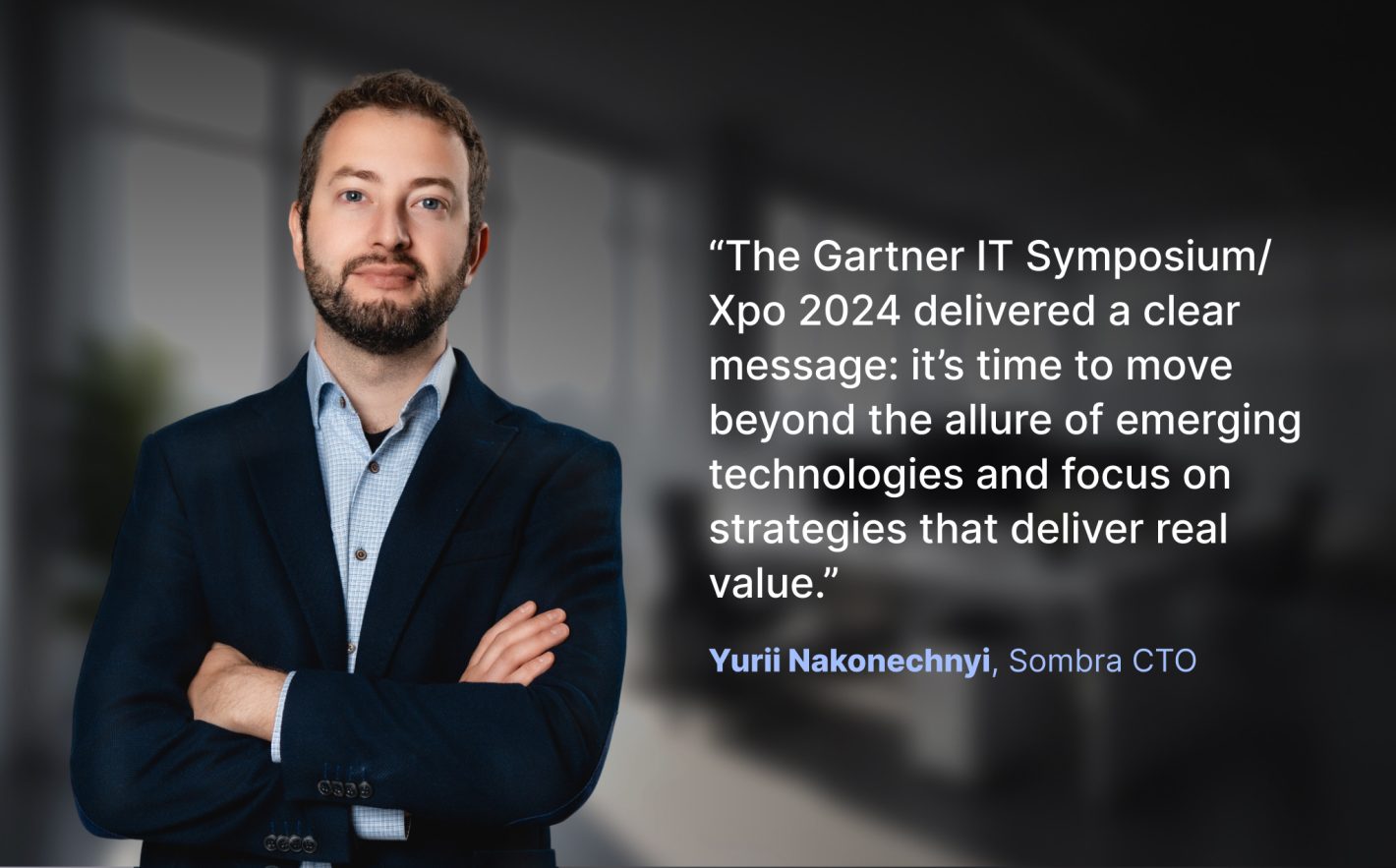


Sombra CTO, Yurii Nakonechnyi
The Gartner IT Symposium/Xpo 2024 delivered a clear message: it’s time to move beyond the allure of emerging technologies and focus on strategies that deliver real value. For CIOs, this means adopting a pragmatic approach to technology investments prioritizing initiatives that offer measurable outcomes and align with broader business goals.
The key to this transformation lies in assembling the right talent to navigate and implement chosen technologies effectively. At Sombra, we are ready to provide you with such expertise. Just drop us a line to learn more details from Gartner or to discuss your next big thing!

